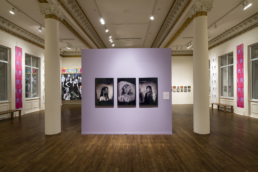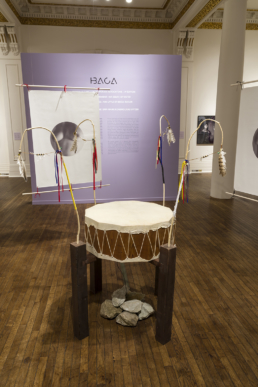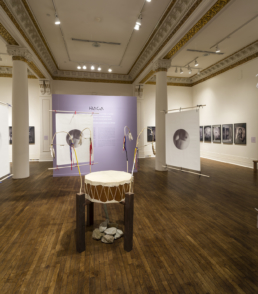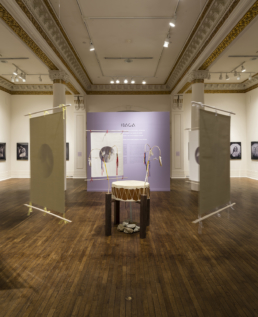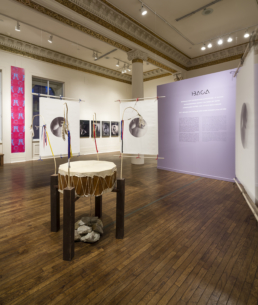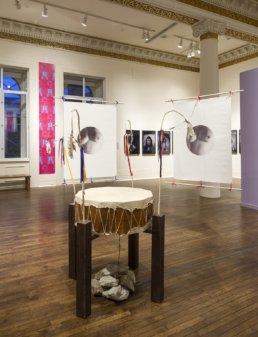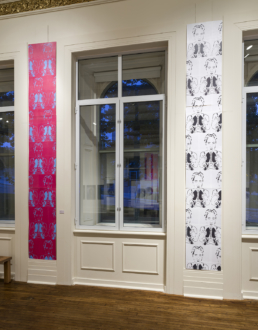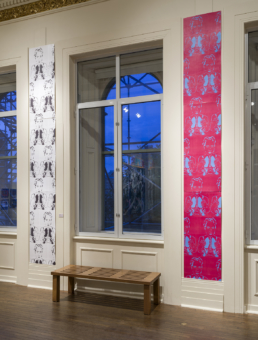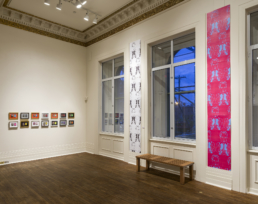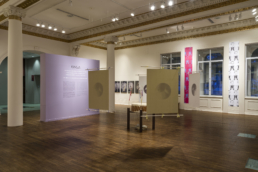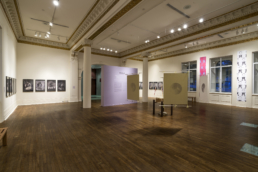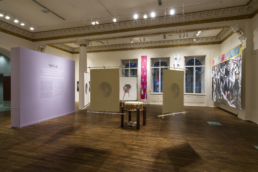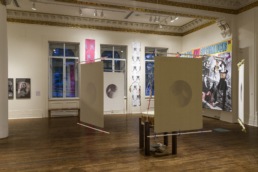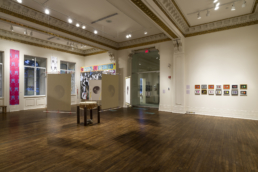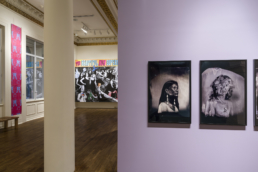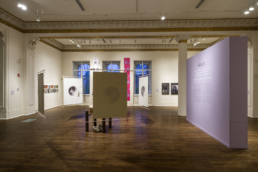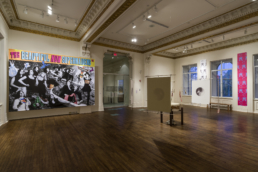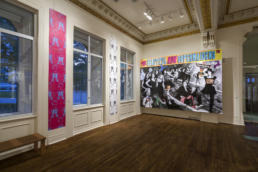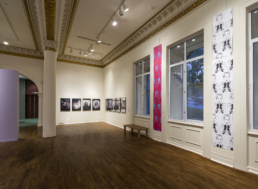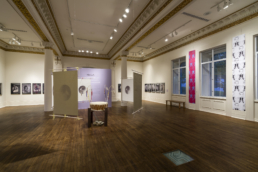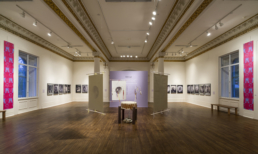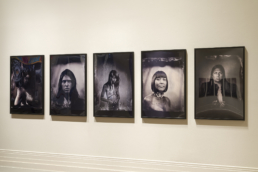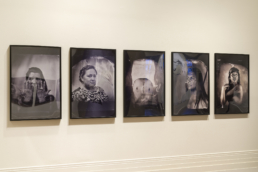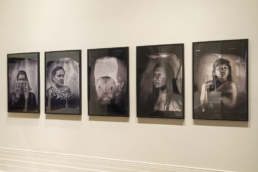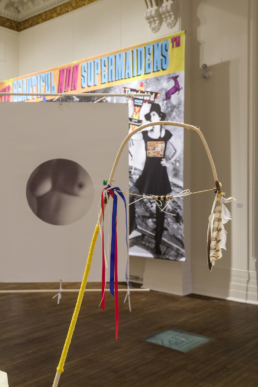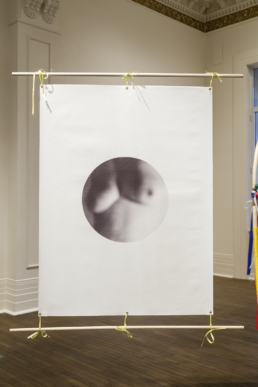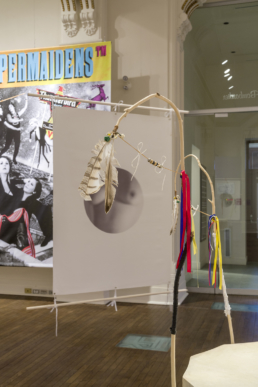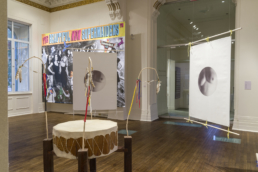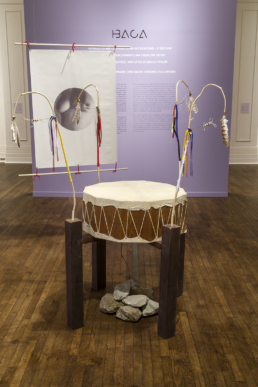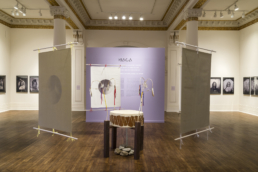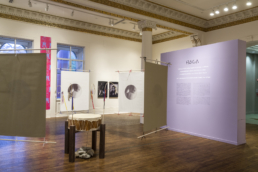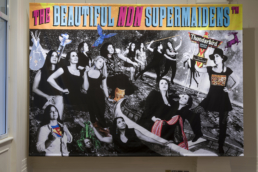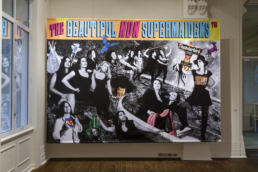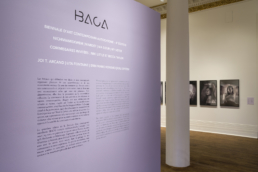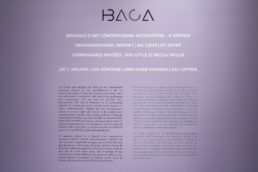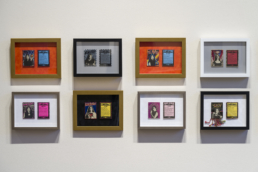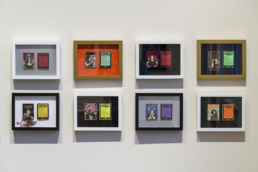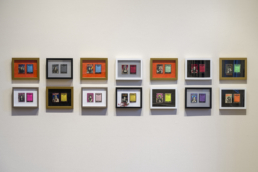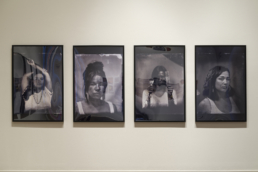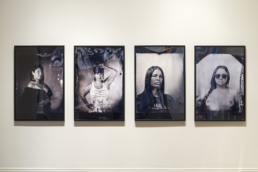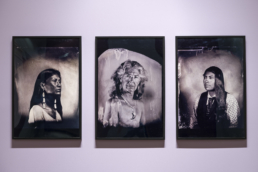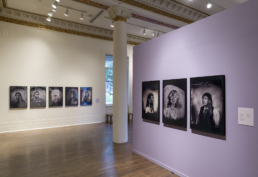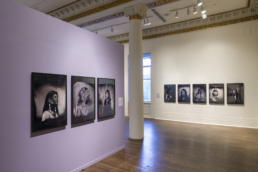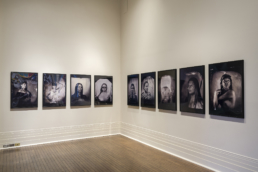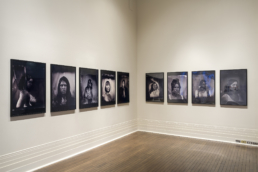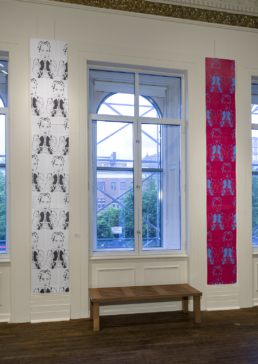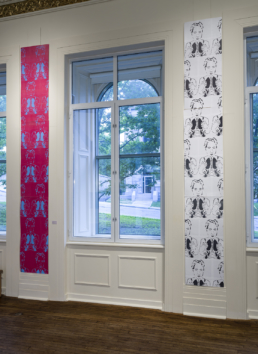Exhibition: May 5 – September 9, 2018
Opening reception : Saturday, May 5 from 5 p.m. – 7 p.m.
Contemporary Native Art Biennial (BACA) – 4th edition
níchiwamiskwém | nimidet | ma soeur | my sister
Guest curators: Niki Little and Becca Taylor
Joi T. Arcand (Cree – Muskeg Lake), Lita Fontaine (Anishinabe), Erin Marie Konsmo (Métis – Alberta), Kali Spitzer (Kaska Dena – Jewish)
Saturday, May 5, 2018, 3:30 p.m.
Shuttle
For the vernissage on Saturday, May 5, a shuttle service will be offered free of charge. The departure is scheduled at 3.30 pm in front of gallery Art Mûr and we leave the Musee des beaux-arts de Sherbrooke at 7 p.m. Limited space. Reservations: Please contact BACA
To and For One Another
Text by Niki Little and Becca Taylor
For us, this biennial began at the kitchen table, over dinner. Like many nights before, we shared our experiences with our sisters, the women who have become our sisters and those women who lead the community actions and movements happening before us. We imagine the conversations women have had over time centred around a hearth, a drum, communal making, a table. Awakening a blood memory to nourish the feminine spirit. The biennial, is an acknowledgement of the powerful women, who have shared meals with us, and their gracious personalities gifting wisdom – over the years. These connections humble and inspire us in our relations with our kin and communities. my sister is a reflection of relationships, collaboration and gathering. We see this as a shared collective of over 40 artists, whose practices are diverse and range in mediums transmitting elements of Indigenous social, political, ceremonial, and physical territories, expanding connections of kinship with and for our sisters.
And we gathered…Your women breathe next to mine.1
The fourth iteration of La Biennale d’art contemporain autochtone (BACA) spans across six locations: Art Gallery of Mississauga, Art Mûr, Stewart Hall Art Gallery, La Guilde, Musée des beaux-arts de Sherbrooke and Musée McCord. Each site is rooted with community elements inviting the viewer to join, to listen, to share, while being surrounded by the varied and layered relationships we connect to within Indigenous sisterhood. We are linked as sisters through our shared knowledge and experience; each kinship has different and multiple connections, whether through a ceremony, activism, lineage, regionality, heritage, nationhood, identity, etc. Within these holistic relationships, we remain grounded, using them as a source and process of sustainability and nourishment.
The connections transcend the physical spaces of the biennial. Artists engage with other artists, and the Indigenous feminine becomes the focus. Photographers, audio composers, performers and makers support each other from conception to process to final product. Together the works act upon and expose a unique authorship/voice inspired by an Indigenous feminine kinship that is rooted in our personal experience shifting into an agency, bringing together those we want to spend our time with. We rely on these women to be our champions in our lives, our practices and our celebrations. The title of the biennial, níchiwamiskwém | nimidet | my sister | ma soeur, is an extension of belonging and acceptance. From us to our sisters; the dedication we have to them, as a part of our communities, we belong to and for one another.
When we define ourselves, when I define myself, the place in which I am like you and the place in which I am not like you, I’m not excluding you from the joining – I’m broadening the joining.2
These relationships and the identities of the people within them are diverse, extending beyond the Western view of gender that encapsulates women within biological and societal roles. While we use English terms, such as “women” and “sister”, throughout the texts accompanying the biennial, we do not mean to exclude those who do not identify in this way. For us, the term ‘sisterhood’ extends out to Indigenous women, feminine trans-gendered, non-binary — who identify with the feminine — and two-spirited individuals. We recognise that the attempt to describe Indigenous philosophies within Western structures is an ongoing negotiation, and the realities of the attempted erasure of our culture through colonisation. Sister resembles an echo, beginning with our spirit and reverberating outwards. Its reflection becomes the responsibilities we hold for one another. Our priority for this biennial was to create a space in the ‘Art World’ that had a chance to move outside of the marginalised view of Indigenous women; that was not only about trauma and survival but about us.
Our lives.
Our interests.
Our communities.
This space is free for us and our community to occupy, allowing us to each recognise our identity while remaining allies to our sisters’. We leave breadth for them to activate and nurture the conversation with their unique voices.
Acknowledging the labour of our relationships to each other and our communities is a pivotal component throughout this biennial. The weight we bear while navigating and creating spaces spans across many shoulders. Each of us honours the labour we realise for our sisters, how we heal for them and ourselves, both outwards and inwards, through these actions. Whether we are joining their voices to grow them louder or quietly hearing their whispered secrets, holding them safe, we nourish. These actions of holding, washing, caring, listening and preserving one another in delicate consensual support, admiration and unity, bring our bodies together in power and stance. In care, we carry our sisters.
I represent the future of women in North America, just as any other women does.3
Women, fighting for our rights and our communities, carry out so many of our gatherings and social movements. They are leaders activating the voice of our territories and our future while honouring and acknowledging those who came before us. Theirs is a continual commitment to collective responsibility. The mirroring and repetition of our actions and community beliefs and values, fixed upon our urban and rural environments, are brought forward through community action and protests, which are amplified by images on posters. This visual language of protest that echoes over rallies, showing up across Turtle Island, and digitally across social media platforms, are ones created by artists. It becomes works upheld by different Indigenous communities: manifestations of resilience taking place with the national and international support of Indigenous communities globally.
Activism and pride are also present in the garment. It represents a reclaiming of our bodies and acknowledgement of our rights. We dress unapologetically. Our clothing, t-shirt designs, earrings or even tattoos are testimonies that we wear on our bodies. The accessibility of these items allows us to openly exhibit with pride — to adorn ourselves — to proclaim an image of resistance and honour. These are our connections to our communities, traditions and our rights as Indigenous women, feminine transgendered, non-binary and two-spirited people, which are displayed proudly. Ancestral knowledge of transmitted skill and pride, transformed by each generation to claim as their own; images repeated through decades, still holding as much meaning and power, as in their first creation.
I offer Coyote to viewers as a woman, the avatar of myself as artist. She is independent, shameless, hungry, able to switch forms and she has all Coyote’s traditional qualities and more.4
We as artists and individuals are activating ideas, shapeshifting between past, present and future, being a part of something and reflecting a reclaimed history and identity. Our identities combined in a space mobilise the now, acknowledging the narrative of our ancestors and re-writing our inclusion, in our terms, showing the transformability through non-linear time, an interchangeable and united connection we have with tradition and futurism. Within this exhibition, we recognise the complexities as women within our communities and within society. We are mothers, sisters, aunts, nohkoms, knowledge carriers, omasinipiihikek, midwives, activists, water protectors, lawyers, academics, community leaders… As individuals, we are not all, but in unity we are.
When we acknowledge our relationship to one another, we must also extend that acknowledgement to the land and our silent understanding of each other and our stories. The breath we share, this profound communication between one another, whether it be through grief or ceremony and movement, creates a place of reflection, understanding and transformation: a reminder to listen and be. This connection allows our spirits to align with each other and ourselves, re-infusing the spirit into our daily lives and activities.
We present our relationships through this shared collective of thought, action and resilience, diverse in labour, meaning and collaborations. Each is unique to the individual. This biennial is a reflection of these individuals, as a collective and in partnership. my sister is not a new conversation; it is not a conversation that includes only these voices. This conversation has considerable depth and understanding and extends into other narratives and future thoughts. It is with a unified voice we send a thank you, ekosani, miikwehc to all the generous artists for your time, words, and reflections. Through your insightfulness, you have assisted us in our vision of this exhibition and within our relationships. The time and conversations we have shared with one another has extended into the writing of this essay. For that, we acknowledge all of you within it.
1. Lesley Belleau. Cornhusk Dolls, Indianland, 2017. pp 13
2. Interview from the feminist renaissance, as quoted by Nancy K. Bereano in the Introduction of Sister Outsider: Essay and Speeches by Audre Lorde. pp 11
3. Lee Maracle. I am Woman: A Native Perspective on Sociology and Feminism. Press Gang, BC.1996. Pp 139
4. Natalie Ball Quote from exhibition Mapping Coyote Black at Nerman Museum of Contemporary Art. http://www.nermanmuseum.org/exhibitions/2015-02-05-ball-natalie-mapping-coyote-black.html
Musée des beaux-arts de Sherbrooke
241 Dufferin
Sherbrooke (QC)

